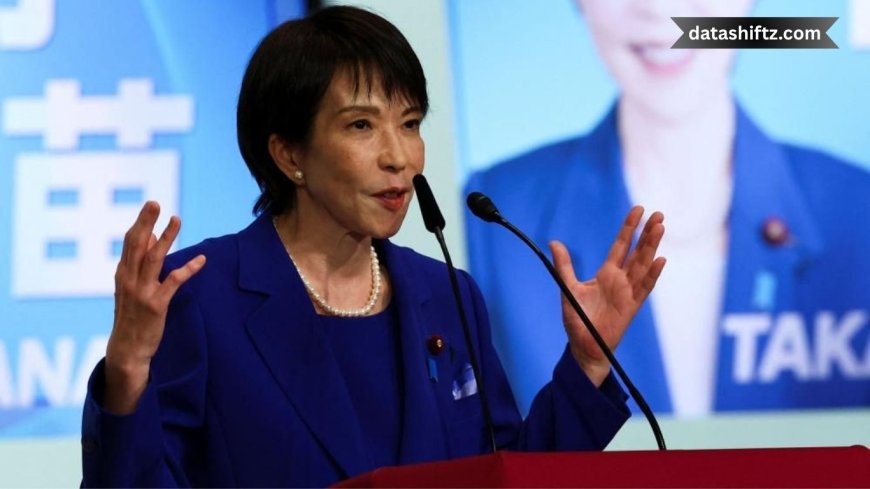Sanae Takaichi: A Controversial Trailblazer in Japanese Politics

Early Life and Educational Background
Sanae Takaichi (高市 早苗) was born on March 7, 1961 in Nara Prefecture, Japan. She comes from relatively modest beginnings: her father worked for an automobile‑related company, and her mother served as a police officer in Nara.
She attended Unebi High School in Nara and later enrolled at Kobe University, graduating in March 1984 from the Faculty of Business Administration. After her university studies, she further honed her political and leadership skills at the Matsushita Institute of Government and Management.
During her formative years, she also undertook a Congressional fellowship in the United States, working in a U.S. House of Representatives office, which exposed her to international legislative processes.
Her early years laid the foundation for a politician who would combine technical competence, administrative interest, and ideological conviction.
Political Rise and Key Positions
Entry into Politics
Takaichi’s formal political career began when she was elected to the House of Representatives in 1993, initially as an independent. Shortly afterward she aligned with the Liberal Democratic Party (LDP).
In 1996 she officially joined the LDP, which opened doors for her to take on various roles within the party and government.
Ministerial and Policy Roles
Over the years, Takaichi accumulated a wide range of government and party responsibilities:
| Time Period | Position / Portfolio | Key Responsibilities or Notes |
|---|---|---|
| 2006–2007 | Minister for Innovation, Science & Technology, Gender Equality, Food Safety, Okinawa and Northern Territories | Held multiple cabinet posts in early Abe administration |
| 2014–2017 | Minister for Internal Affairs and Communications | Oversaw local government, communications, social security systems |
| 2019–2020 | Minister for Internal Affairs and Communications (again) | Returned to oversee similar portfolios under Abe’s later term |
| 2022–2024 | Minister of State for Economic Security, and related science/space/intellectual property portfolios | One of her latest and high‑visibility roles |
| 2025 | Leader of the Liberal Democratic Party | Won the LDP leadership in October 2025, positioning her as likely prime minister |
Her party roles have also been extensive: she has chaired the LDP Policy Research Council, headed public relations divisions, and led internal committees on rules, legislation, education, and constitutional matters.
Landmark: LDP Leadership and First Woman Prospect
In October 2025, Takaichi won the leadership election for the LDP, defeating Shinjirō Koizumi in a runoff vote. By winning, she became the first woman to lead the LDP, which is a major turning point in Japanese party politics.
If the Diet confirms her as prime minister, she would make history as Japan’s first female prime minister.
Ideology, Controversies, and Policy Stance
Takaichi is often described as a staunch conservative and nationalist. Her policy positions and public statements have generated debate and scrutiny.
Policy and Ideological Positions
-
Social conservatism: She opposes same‑sex marriage, and resists changes allowing married couples to retain separate surnames.
-
Constitutional revision and defense strengthening: Takaichi supports revising Article 9 of Japan’s Constitution (which limits military role) and advocating for a more assertive defense posture.
-
Economic strategy: She pledges continuity with the “Abenomics” approach—monetary easing, fiscal stimulus, pro-growth reforms—while adding her own “Sanaenomics” flavor.
-
Media and national sovereignty: She has expressed support for stronger government oversight of media and punishing outlets critical of the state.
-
Women’s rights paradox: A notable contradiction: while she breaks barriers as a female leader, she maintains conservative stances that many critics say hinder broader gender equality.
Controversies and Criticisms
-
Yasukuni Shrine visits: Her visits to the war-linked Yasukuni Shrine have inflamed tensions with neighboring countries, especially China and South Korea.
-
Photo with extremist figure: In 2014, Takaichi was photographed with Kazunari Yamada, leader of a neo‑Nazi group—she denied any ties but faced harsh criticism.
-
Internal affairs document scandal (2023): A leaked internal document implied that during her tenure as minister she pressured broadcasters. When the document’s authenticity was confirmed, critics demanded her resignation.
These controversies underscore how her rise is not straightforward, but fraught with ideological contradictions and diplomatic risks.
Why Her Rise Matters
Takaichi’s ascendancy represents more than a personal victory — it has broader implications:
-
Breaking gender barriers
Her leadership candidacy and LDP victory challenge deeply ingrained gender norms in Japan’s male‑dominated political elite. -
Conservative resurgence
Her election signals a possible shift toward more nationalistic and socially conservative policies in Japan’s governance. -
Geopolitical ramifications
As prime minister, her posture on defense, constitutional revision, and media may influence Japan’s relations with the U.S., China, South Korea, and regional security alignment. -
Domestic tension between image and substance
While projecting women empowerment, her stances on legal reforms for women reveal a tension between symbolism and substance in her approach.
Summary
-
Sanae Takaichi was born in 1961 in Nara and educated at Kobe University and Matsushita Institute.
-
She entered politics in 1993, later joining the LDP.
-
She has held many ministerial roles, especially in internal affairs, communications, and economic security.
-
In 2025, she won LDP leadership and is poised to become Japan’s first female prime minister.
-
Ideologically, she is a conservative nationalist with strong stances on social policy, defense, and media oversight.
-
Her record is controversial due to shrine visits, extremist associations, and opposing gender-equal reforms.
Concluding Thoughts
Sanae Takaichi’s journey is in many ways paradoxical: she is a woman ascending to the highest arenas of power in a society that often resists female leadership, yet her policy positions have been criticized as reinforcing traditional structures that constrain women. Her rise spotlights enduring tensions in modern Japan between progress and tradition, global alignment and national sovereignty, and symbolism versus substantive reform.
If she becomes prime minister, her tenure will likely be a crucible testing how much Japan can evolve politically, socially, and diplomatically under a leader who embodies both pioneering firsts and deeply rooted conservatism.






























